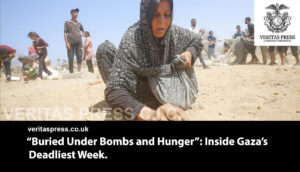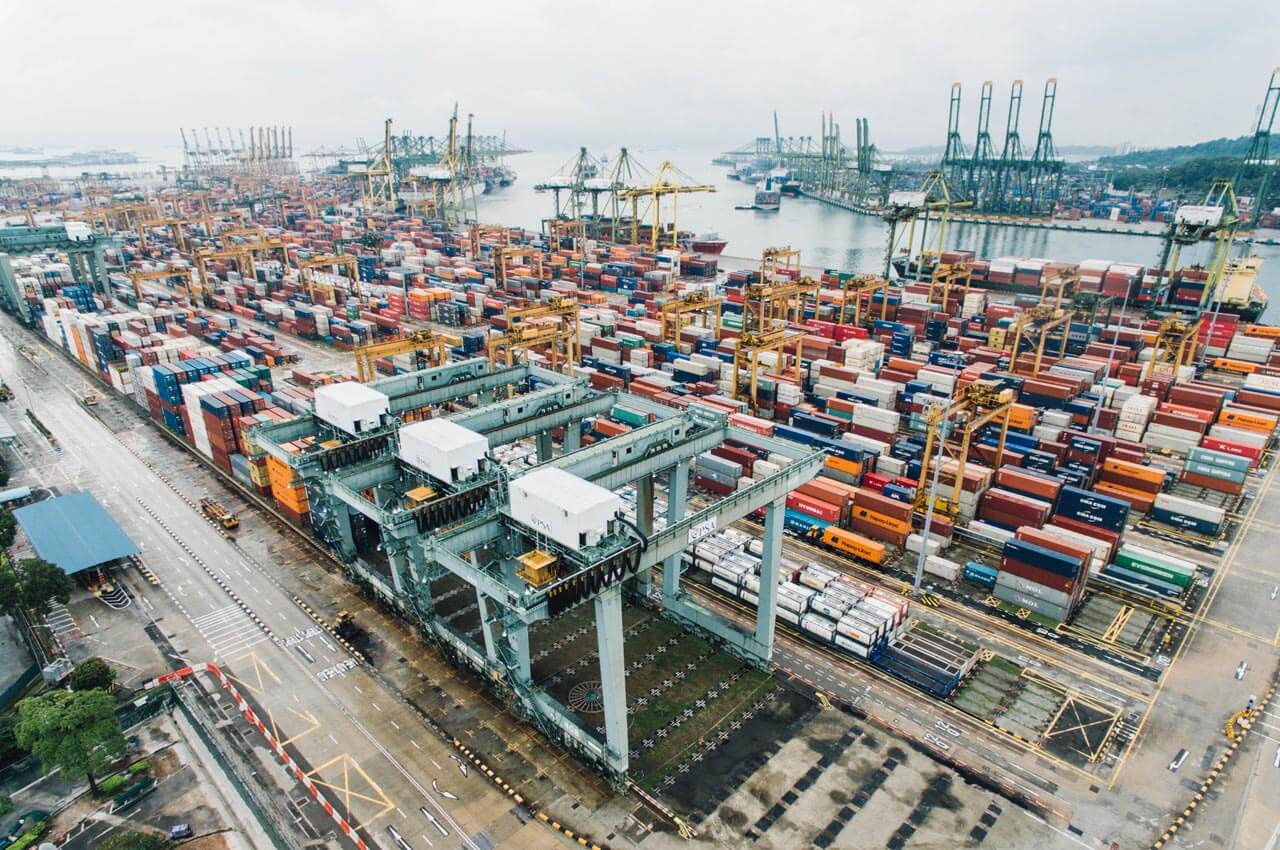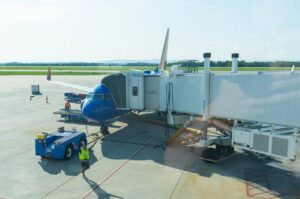Press Release: Veritas Press C.I.C. Author: Kamran Faqir Article Date Published: 02 Sept 2025 at 14:17 GMT Category: Asia | Afghanistan | Earthquake Source(s): Veritas Press C.I.C. | Multi News Agencies
The shallow, late-night earthquake that ripped through eastern Afghanistan on August 31, magnitude 6.0, 8–10 km deep according to the USGS, has so far killed well over 1,400 people, injured thousands more and levelled entire mud-brick villages in Kunar and neighbouring provinces. The geophysics are simple; the human catastrophe is political. What a single night laid bare was not only the vulnerability of steep-valley settlements to shallow shaking, but years of degraded public services, collapsed aid pipelines, and policy choices that left Afghanistan poor, medically brittle and diplomatically isolated the moment disaster struck.
This is an investigative analysis of what happened, why it has been so deadly, and who, inside and outside Afghanistan, will have to answer for the failures now unfolding.
The Geology: Shallow Depth + Old Houses = Mass Fatalities
Seismologists and geologists explain quickly why a 6.0 quake killed so many. The USGS recorded the event at a shallow depth (≈8 km), meaning seismic energy had little distance to attenuate before hitting the surface, the worst possible geometry for populated valleys of poorly built homes. As Al Jazeera’s explainer and other experts put it: “shallow earthquakes tend to be much more destructive because their energy has less distance to travel before reaching people and buildings.” Professor Chris Elders, of Curtin University, told reporters that the combination of steep mountainous terrain and dense settlement in valley bottoms made the area particularly vulnerable.
But physics alone doesn’t explain the scale of death. In Kunar and neighbouring districts people live in mud-and-stone, load-bearing houses that collapse catastrophically under even moderate shaking. A post-quake expert analysis shows the same pattern we saw in Herat (2023) and Paktika (2022): shallow quakes + brittle, unreinforced masonry = disproportionate fatalities.
What Rescuers And Survivors Say: A Race Against Time That Local Systems Could Not Win.
Local officials and first responders describe a desperate, improvisational effort. Kunar’s disaster management head Ehsanullah Ehsan said bluntly: “We cannot accurately predict how many bodies might still be trapped under the rubble… our effort is to complete these operations as soon as possible and to begin distributing aid to the affected families.” Helicopters and military crews airlifted survivors where roads were blocked; villagers used their bare hands to dig out neighbours.
The human testimony is consistent and chilling. “There is death in every home,” survivors told live reporters working in the field. One volunteer described entire lanes of houses turned into rubble; children and women lay under blankets as makeshift field clinics ran out of supplies. Those accounts mirror photographs taken from helicopters over Mazar Dara and Nurgal that show flattened compounds and lines of ambulances trying to claw through mountain roads.
Aid Pipelines And Preparedness: The Politics That Worsened The Disaster.
Here is the core investigative finding: this was not only a natural disaster, it was a governance and foreign-policy disaster too.
Since the Taliban’s return in 2021, Afghanistan’s humanitarian architecture has been hollowed out by two linked phenomena:
- Cuts and freezes in international funding. The United States, long the single largest donor to Afghan relief operations, drastically scaled back and in many cases halted funding early in 2025. That reduction cascaded through UN agencies and NGOs; emergency stocks, medical outreach and airlift capacity diminished. Analysts and aid agencies had been warning for months that the closure of clinics and grounding of logistical capacity left Afghanistan fragile, a reality now exposed by this quake.
- Operational constraints and conditionality. Donors’ refusal to work through or fund the Taliban directly, combined with sanctions and Taliban restrictions (particularly on women’s participation in the workforce), have constrained how agencies can staff and deliver aid. The WHO and UN warned immediately that “the pre-earthquake fragility of the health system means local capacity is overwhelmed, creating total dependence on external actors.” Yet those external actors had been reduced by policy choices long before the earth moved.
The result: fewer helicopters to reach scattered valley settlements, fewer funded field hospitals, a shortage of emergency medical supplies and, crucially, far fewer operational staff able to work in remote areas when the clock mattered most.
How Much Aid Has Arrived And How It’s Being Delivered:
A flurry of pledges and limited shipments followed the appeals: the UN released an initial $5 millionfrom its emergency fund; Britain announced a £1m package routed through UN/ICRC channels; India sent tents and food supplies;Pakistan, Iran, China, the UAE and the EU pledged support or med-evac assistance. But promises are not the same as on-the-ground capacity, and with mountain roads blocked, aid that exists often cannot be delivered quickly enough.
International humanitarian organisations already on the ground, the Afghan Red Crescent/IFRC, UNICEF and WHO, moved fast but were explicit about limits. UNICEF warned “thousands of children are at risk” and listed immediate items being sent: medicines, tents, hygiene kits and tarpaulins. The IFRC described volunteers “joining the search for survivors” but emphasised that hundreds of villages remain difficult to reach.
Accountability Questions: Who Should Be Blamed And For What?
There are multiple accountable failures to examine:
- Donor policy makers in Washington, EU capitals and elsewhere must answer whether broad, rapid cuts to aid, and the political decision to decouple humanitarian channels from state structures, were accompanied by contingency planning that would preserve life-saving capacity in the event of shocks. The evidence suggests they were not. Reporting indicates USAID/UN food-aid programs were sharply reduced in early 2025, leaving WFP and partners unable to reach pre-existing caseloads.
- The Taliban administration must be scrutinised for its capacity planning and disaster preparedness. The regime immediately dispatched security forces and claimed relief was en-route, but decades of conflict and years of underinvestment in roads, hospitals and resilient shelter left communities exposed. Independent verification of the reach and neutrality of relief within Taliban-controlled terrain will be vital.
- International agencies and NGOs will need to explain supply chain resilience: why were critical air-lift assets and pre-positioned stocks insufficient to reach isolated valleys within the first 48 hours? Where were regional stockpiles and why were they not mobilised faster? IFRC and Red Crescent spokespeople have already called for scaled-up international assistance; investigators should track procurement and logistics timelines.
Longer-Term Systemic Failures: Housing, Mapping, Adaptation.
Beyond immediate rescue and aid, this quake exposes long-term structural failures that require a different kind of accountability and funding:
- Building standards. Large parts of rural Afghanistan remain reliant on unreinforced mud-brick housing. There has been little, sustained investment in retrofitting or introducing low-cost, earthquake-resilient techniques at scale. International donors previously supported resilience projects; sustained cuts have ended those programs or left them tokenistic.
- Seismic monitoring and early warning. The event underscores a regional need for better seismic networks and rapid assessment capacity in the Hindu Kush. Even simple investments in mapping, community training and evacuation drills can reduce mortality when shallow quakes occur. Science advisers and regional observatories have long advocated for such systems.
- Health system resilience. WHO’s situational report notes that hundreds of health centres have been closed in recent months because of funding shortfalls — a collapse that turns otherwise survivable injury into death or long-term disability. Rebuilding will require not only tents and trauma kits, but sustained funding to reopen clinics and train health workers.
Voices From The Field (Selected Quotes)
- “There is death in every home.” — survivors interviewed by Guardian journalists reporting from Nurgal.
- “We cannot accurately predict how many bodies might still be trapped under the rubble… Our effort is to complete these operations as soon as possible.” — Ehsanullah Ehsan, Kunar head of disaster management.
- “The pre-earthquake fragility of the health system means local capacity is overwhelmed, creating total dependence on external actors.” — WHO situational update.
- “We are sending critical emergency supplies including medicines, tents and hygiene items; thousands of children are at risk.” — UNICEF statement.
- “Due to the earthquake’s shallow hypocenter the shaking was far more destructive” — USGS and multiple seismologists commenting in live coverage.
What To Watch, Immediate Investigative Steps:
- Track donor disbursements and timelines. Which pledges converted into delivered goods, and how long did each step take? (UN CERF, bilateral pledges, NGO cargo manifests.)
- Audit logistic bottlenecks. Why did road-clearing and helicopter deployments lag? Who held air assets prior to the quake and were they redeployable?
- Map clinic closures to mortality. Were the villages with the highest death rates served by clinics that closed earlier this year? WHO and UN facility lists should be cross-checked against casualty locations.
- Examine local building programs. Which resilience programs were defunded in the past 18 months and by which donors? Trace those cancellations to current vulnerability.
Conclusion: A Catastrophe Made Worse By Human Choices.
The September 2025 earthquake in Afghanistan was not simply a natural disaster, it was a man-made calamity compounded by political neglect, chronic underfunding, and systemic abandonment. The tectonic plates may have shifted beneath Kunar and Nangarhar, but what collapsed most decisively was theglobal commitment to disaster preparedness and humanitarian principles.
Seismologists had warned for years that the Hindu Kush remains one of the most active seismic zones on Earth. Yet, despite these warnings, early warning systems were virtually non-existent, and no meaningful investment was made in earthquake-resistant housing or rapid-response infrastructure.
In the words of one Kabul University geologist:
“The earth moved, but the world stood still. We were left to die under the rubble.”
The first 72 hours, the golden window for saving lives, were squandered. UN agencies admitted logistical paralysis, citing funding shortfalls and lack of air assets, while donors scrambled to draft press statements instead of deploying helicopters. By the time international assistance trickled in, survivors were digging out loved ones with their bare hands. “We heard their voices under the rubble for two days,” said Abdul Rahman, a farmer from Nurgal. “They died calling for help that never came.”
This failure was not inevitable. It was the predictable result of deliberate policy choices:
- Donor governments slashed disaster preparedness budgets for Afghanistan, prioritising geopolitics over human survival.
- UN agencies issued repeated warnings in early 2025 about severe funding gaps, but appeals were ignored.
- The Taliban’s opaque governance and restrictions on aid workers, particularly women, crippled the response at the community level.
The earthquake revealed a brutal truth: Afghanistan’s vulnerability is manufactured by isolation, sanctions, and the dismantling of humanitarian safety nets. Every collapsed wall tells a story not only of seismic force but of diplomatic indifference. The question now is not whether the earth will shake again, it will, but whether the world will allow this cycle of abandonment to repeat. If global leaders continue to treat Afghan lives as expendable collateral in a political chess game, then the next disaster will not only be foreseen, it will be foreordained.
Tags:




























Leave a Reply